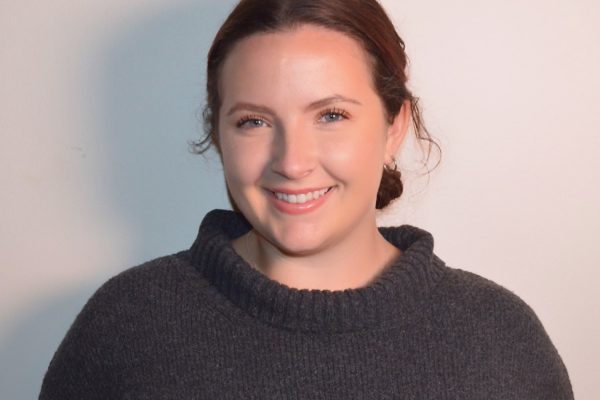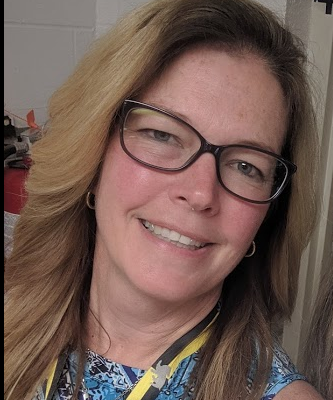By: Julie Giglia
Whitman-Hanson Regional School District
The 3D printer technology had a positive impact on both me and my students. The opportunity to have a 3D printer in my classroom allowed us to have hands-on learning and authentic exploration to create tangible objects. Students and I learned a tremendous amount about 3D printing, from design to production, as well as demonstrations and physical participatory access which allowed possibilities for me and for my students to engage in new learning activities. This technology provided skills needed to be successful members of our global economy and engage students in the 21st century.
In the fall trimester of 2015, students worked in teams of two to complete the design and development of the smartphone case project. Students learned and applied the steps in the design process. Students created a project plan that outlined the steps needed from inception to the final cell phone prototype design. It was my job to ensure collaboration with students on the design solution ensuring all steps in the design process are well thought out and completed. Students would have to research target customers’ needs to determine attributes cell phone users want, complete 2D and 3D sketches of the prototype and use CAD software such as (Sketch up Pro or Autodesk) draw the right dimensional designs to ensure the design prototypes measurements are precise. Teams (2 people) would participate in designing a cell phone case cover using the CAD software and print final physical cell phone case prototype. This was a learning curve for both me and my students. Often, we had to create many prototypes because the cell phone case ergonomically did not fit the physical cell phone. Students would get frustrated if the case did not fit with their first prototype, it was a learning curve for all involved.
Professionally, I learned how to master and operate a 3D printer with the help from other 3D printer users, 3D printer workshops, 3D printer books, and YouTube videos.
This project gives me the opportunity to enhance my technology skills and what can be created through 3D printing. As for my students, they learned about 3D printing and it showed them how it can be used as prototyping tool, and it provided users with the ability to touch, hold, and even take home an accurate model of what was designed, especially if it was a cell phone case they create from inception. Students were motivated to learn about the 3D printer technology and it improved their academic performance.
We captured the 3D printing learning process in a video which narrates our journey through the process of designing, developing, and creating a smart phone printer case. This video is evidence and perspective from both students and cell phone customers on the 3D printer process. The video can be found on YouTube.
The biggest obstacle we faced while working on the phone cases was installing the Flash Forge 3D printer software on our school’s desktop computers because of incompatibility issues with the computer’s video cards. Our technology department had a hard time installing and running the software which delayed us from getting the 3D printers up and running. I ended up using my own personal laptop which enabled me to run the Flash Forge software and print physical items using the 3D printer technology. We did meet our timelines to complete this project.
I had the opportunity to train one other teacher on how to use the 3D printer in our school. In April, I will give a demonstration and talk on the workings of a 3D printers to BAWIB (Brockton Area Workforce Investment Board) located in Brockton, Massachusetts. Additionally, I gave a presentation and demonstration to Whitman-Hanson’s culinary class on 3D printed food and how 3D printers exist today to create food in today’s restaurant business.
Students designed, created, marketed, and sold the phones to customers for $18 per case and the money made from this endeavor will go back to purchasing filament for the 3D printers. This will enable us to continue to purchase filament from proceeds of selling phone cases.
Additionally, I promised Wendy Cotta, Mass Cue Grants Chairperson, I would be available to do a presentation(s) and demonstration(s) on how a 3D printer works and explain to individuals how I applied for a Mass Cue grant, purchased a 3D printer, and explain how I implemented my lesson plan Think, Design, Create, and Sell: The Process of Developing a Smartphone Case using 3D Printer Technology. Also, I would share the 3D technology video with the audience.
About the Author:
Julie Giglia has been a Business/Technology teacher at Whitman-Hanson Regional High School for 13 years. Recently, she was awarded 2016 Massachusetts Business Teacher of the Year. In February of 2015, she was named Visa Practical Money Skills Innovative Educator for the Month of February. She has written and won two grants to support 3D printer technology for Whitman-Hanson Regional High School from Mass Cue and OtterBox Cares foundation. She strives to use technology in the classroom to enhance learning and make education innovative and fun for her students.
 Print this post
Print this post



